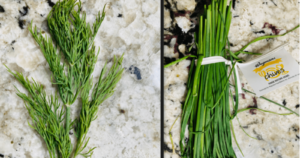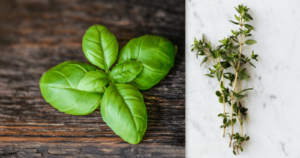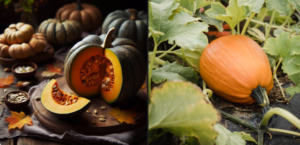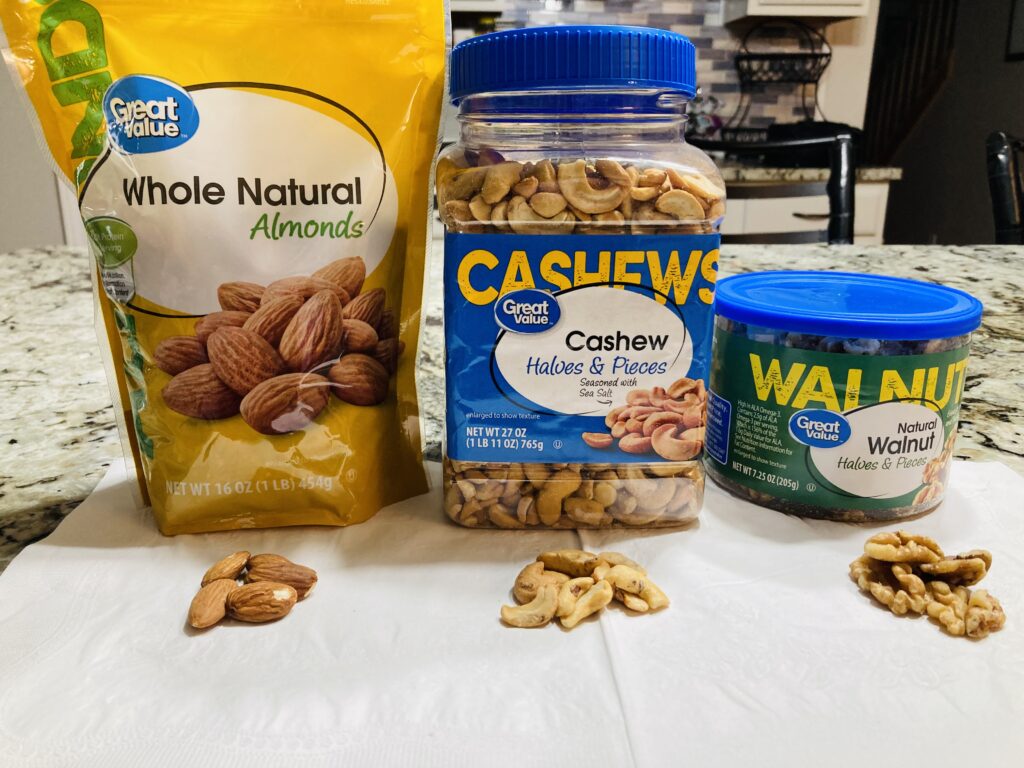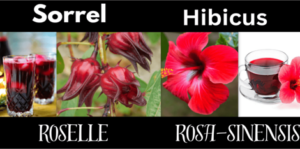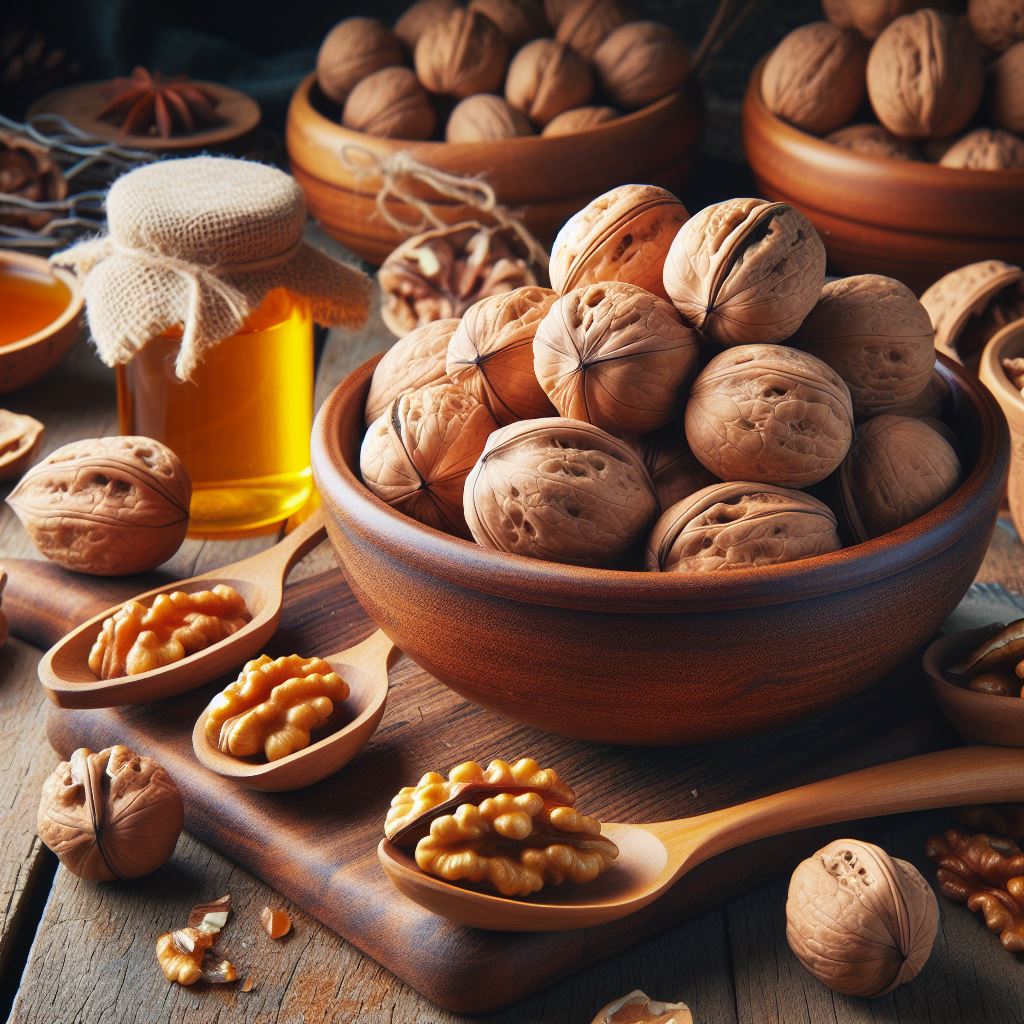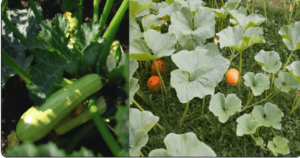Pickling cucumbers and regular slicing cucumbers may belong to the same botanical family, but they serve distinctly different purposes in the culinary world. The choice between these two varieties hinges on more than just their physical appearance; it extends to their taste, texture, and most importantly, their suitability for specific culinary applications. While both are technically cucumbers, each brings its own unique attributes to the table, making them indispensable in their respective domains of pickling jars and fresh salads. Let’s delve into the nuances that set these cucumbers apart, exploring the characteristics that make them indispensable ingredients in their own right.
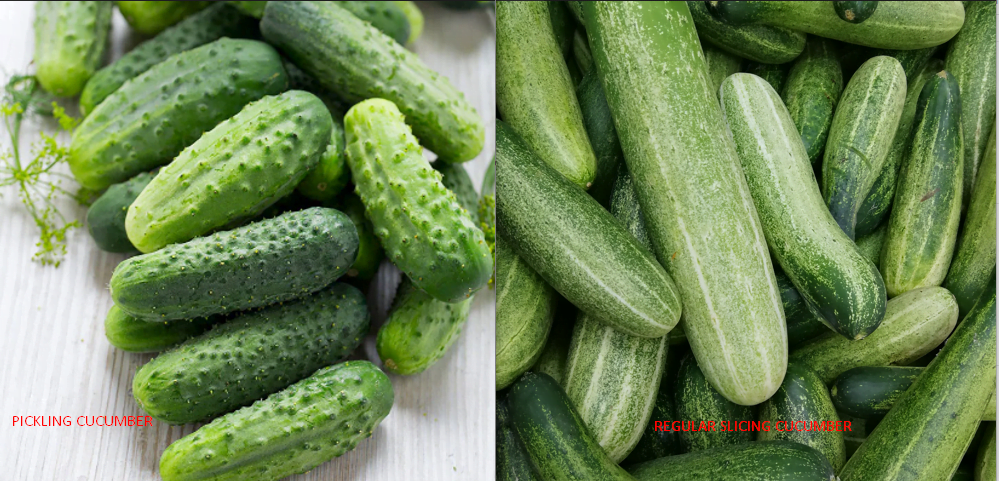
PICKLING CUCUMBER REGULAR SLICING CUCUMBER
Pickling Cucumber
A pickling cucumber, also known as a pickler or pickler cucumber, is a specific type of cucumber variety that is cultivated and selected for optimal use in the pickling process. These cucumbers are typically shorter, stubbier, and have a bumpy skin texture compared to regular slicing cucumbers. They are chosen for pickling because of their firm flesh, small size, and a thinner skin that allows them to absorb pickling brine and retain their crunchiness after the pickling process.

IMAGE BY High Mowing Organic Seeds
Pickling cucumbers are specifically bred and chosen for their ability to maintain a crisp texture even after being soaked in vinegar or brine, which is a crucial quality for pickled products. Their flavor profile tends to be mild and slightly sweeter compared to slicing cucumbers.
It’s important to note that not all cucumber varieties are suitable for pickling. Varieties like “Kirby” or “National Pickling” are popular choices for pickling due to their desirable attributes.
In summary, a pickling cucumber is a specialized variety of cucumber that is ideal for the pickling process, thanks to its specific texture, size, and skin characteristics. Cucumbers bred specifically for pickling are shorter: anywhere from 1-1/2 to about 6 inches long.
8 Types of Pickling Cucumbers
There are several types of cucumbers that are commonly used for pickling. Here are some of the most popular varieties:
- National Pickling (National): This is one of the most widely used pickling cucumber varieties. It is known for its consistent size, shape, and uniform dark green color. National cucumbers have a slightly tapered end and are prized for their crisp texture. National Pickling Cucumber was developed many decades ago by the National Pickle Packers Association as the standard cucumber variety for pickling. This open-pollinated, heirloom variety produces heavy yields of blunt, thick cucumbers that are dark green with black spines. The ends are slightly tapered so that they fit and pack into a pickle jar extremely well.
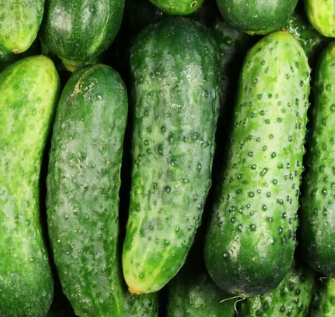
National Pickling Cucumber
2.Kirby (also known as Kirby Burpless): Kirby cucumbers are a classic pickling variety. They are small, stout, and bumpy-skinned, making them perfect for absorbing pickling brine. They are known for their crunchiness and are widely used for both dill and sweet pickles.
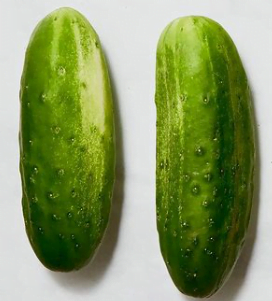
Kirby Burpless cucumber
3.Boston Pickling: This variety is popular for its firm, blocky shape. It’s excellent for both pickling and fresh eating. It has a mild flavor and is often used for making bread-and-butter pickles. Size 3 to 7 Inches Long
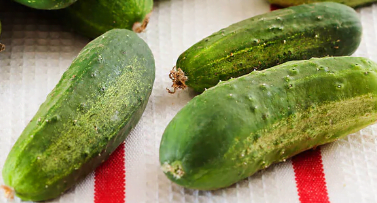
Boston Pickling cucumber
4.County Fair: County Fair cucumbers are similar to National Pickling cucumbers, but they are slightly shorter and blockier. They are known for their high yields and consistent size, which is important for producing uniform pickles.
5.Regal (Regal MT): Regal cucumbers are another pickling variety known for their uniform size and shape. They have a bright green color and are known for producing high-quality pickles.
6.Calypso: Calypso cucumbers are a newer variety known for their disease resistance and high yield. They have a dark green skin and are often used for both pickling and slicing.
7.Bush Pickle: As the name suggests, this variety is well-suited for container gardening or smaller garden spaces. It produces compact, bushy plants with small pickling cucumbers.
8.Homemade Pickles: This variety is specifically bred for pickling. It is known for its excellent disease resistance and high yield.
When choosing a pickling cucumber, it’s important to consider factors like size, shape, texture, and flavor, depending on your specific pickling recipe and preferences. Different varieties may lend themselves better to certain types of pickles, whether they be dill, sweet, bread-and-butter, or other variations.
The size ,shape and texture of pickling cucumber
Pickling cucumbers, also known as picklers, are a specific variety of cucumber that are well-suited for pickling due to their size, texture, and shape. Here are the typical characteristics of pickling cucumbers:
Size:
- Pickling cucumbers are relatively small compared to other cucumber varieties.
- They are usually harvested when they are about 3 to 5 inches (7.6 to 12.7 cm) in length.
- Some varieties may grow slightly larger, but they are generally smaller than slicing cucumbers.
Texture:
- Pickling cucumbers have a firm and crisp texture, which is important for maintaining their crunchiness during the pickling process.
- They have fewer seeds compared to slicing cucumbers, which contributes to their desirable texture.
Shape:
- Pickling cucumbers are typically cylindrical in shape.
- They have a uniform diameter along their length, which makes them well-suited for fitting into jars for pickling.
- Some pickling cucumber varieties may have slight variations in shape, but they are generally straight and uniform.
It’s worth noting that within the category of pickling cucumbers, there are different cultivars and varieties, each with its unique characteristics. These traits may vary slightly depending on the specific type of pickling cucumber you’re working with.
How Pickling Cucumber is grown
Pickling cucumbers are grown in much the same way as regular cucumbers, with a few specific considerations to ensure they are suitable for pickling. Here’s a basic overview of how to grow pickling cucumbers:
- Selecting the Right Variety:
- Look for cucumber varieties specifically labeled as “pickling cucumbers.” These are typically smaller, more uniform in size, and have a thinner skin compared to slicing cucumbers.
- Choosing the Right Location:
- Cucumbers thrive in warm, sunny locations. Choose a spot in your garden that receives at least 6-8 hours of direct sunlight daily.
- Soil Preparation:
- Cucumbers prefer well-drained soil with a pH range of 6.0 to 6.8. Ensure the soil is rich in organic matter and amend it with compost or well-rotted manure before planting.
- Planting:
- Plant cucumber seeds or seedlings once the soil has warmed to at least 60°F (15°C), typically a few weeks after the last frost date. Space the plants about 18 inches apart in rows that are 3-5 feet apart.
- Watering:
- Cucumbers need consistent moisture, especially during the flowering and fruiting stages. Water deeply and regularly, aiming to keep the soil evenly moist but not waterlogged.
- Mulching:
- Applying a layer of organic mulch around the base of the plants can help retain soil moisture, suppress weeds, and regulate soil temperature.
- Support or Trellising:
- Pickling cucumbers can benefit from being grown on trellises or supports. This keeps the fruit off the ground, which can help prevent rot and disease, and makes harvesting easier.
- Fertilizing:
- Cucumbers are heavy feeders. Apply a balanced, all-purpose fertilizer at planting, and consider providing additional doses of fertilizer during the growing season according to the instructions on the product.
- Pest and Disease Management:
- Keep an eye out for common cucumber pests like cucumber beetles, aphids, and powdery mildew. You can use natural pest control methods or, if necessary, apply organic insecticidal soap or neem oil.
- Harvesting:
- Pickling cucumbers are typically harvested when they are about 2 to 4 inches long. They should be firm, bright green, and have a good shape. Check your specific cucumber variety for the best harvest size.
- Processing:
- After harvesting, you’ll need to follow a pickling recipe to process the cucumbers. This typically involves preparing a brine with vinegar, water, salt, and spices, and then packing the cucumbers in jars for pickling.
Remember to check for any specific recommendations or tips provided by the seed or plant supplier, as different varieties may have slightly different growing requirements. Additionally, local climate and soil conditions can also influence how you grow pickling cucumbers in your specific area.
Health Benefits of Pickled Cucumber
Pickled cucumbers, commonly known as pickles, offer some health benefits, but it’s important to note that they can also be high in sodium due to the pickling process. Here are some potential health benefits of pickled cucumbers:
- Probiotics: Fermented pickles (those made through natural fermentation rather than with vinegar) can be a source of probiotics. Probiotics are beneficial bacteria that support a healthy balance of gut microflora, which is important for digestion and overall health.
- Digestive Health: The probiotics in fermented pickles can aid in digestion and promote a healthy gut environment. They can help with issues like bloating, gas, and diarrhea.
- Rich in Antioxidants: Pickles, especially those made from cucumbers, can retain some of the antioxidant properties of the original vegetable. These antioxidants help combat free radicals in the body.
- Low in Calories: Pickles are generally low in calories, which makes them a good option for those looking to manage their weight or reduce calorie intake.
- Hydration: Pickles, like fresh cucumbers, are water-rich, contributing to your daily fluid intake and helping with hydration.
- Source of Vitamins and Minerals: Pickles retain some of the nutrients from the cucumbers they were made from, including vitamin K, potassium, and small amounts of vitamin A.
- Blood Sugar Regulation: Some studies suggest that vinegar, a common ingredient in pickling, may help improve insulin sensitivity, potentially aiding in blood sugar control.
- Appetite Control: The combination of fiber and probiotics in pickles may help promote feelings of fullness, which can be beneficial for appetite control.
- May Reduce Muscle Cramps: Pickles are a source of electrolytes like potassium and sodium, which can help prevent or alleviate muscle cramps.
Considerations for Pickled Cucumber
- Sodium Content: Many commercially processed pickles are high in sodium due to the pickling process. Excessive sodium intake can lead to high blood pressure and other health issues, so it’s important to consume pickles in moderation.
- Added Sugar: Some commercially produced pickles may have added sugars, which can contribute to excessive calorie intake.
- Acidity: The high acidity of pickles can be problematic for individuals with certain digestive conditions like acid reflux or gastritis.
Overall, if you enjoy pickles, it’s best to opt for varieties that are naturally fermented without excessive sodium or added sugars. Making homemade pickles can also give you more control over the ingredients used. Always consult with a healthcare professional if you have specific dietary concerns or health conditions.
Uses of pickled cucumber
Pickled cucumbers, commonly known as pickles, are a versatile food item that can be used in various ways. Here are some popular uses for pickled cucumbers:
- Sandwiches and Burgers: Pickles are a classic topping for sandwiches and burgers. They add a crunchy texture and a tangy flavor that complements the other ingredients.
- Relish: Chopped pickles can be used to make relish, which is a condiment often used in hot dogs, burgers, and salads.
- Salads: Sliced or chopped pickles can be added to salads for an extra burst of flavor. They work particularly well in potato salads and pasta salads.
pickled cucumber Salad ingredients

Image by thedeliciouscrescent.
- pickle cucumber
- Fresh Dill (optional)
- Red Onion, Tomatoes, bell peppers, radishes
- White Vinegar
- Sugar, salt adjust to taste
- Olive, vegetable of choice.
- Wraps and Burritos: Pickles can be used as a filling in wraps and burritos. They provide a zesty contrast to the other ingredients.
- Garnish: Pickles can be used as a garnish for various dishes, including meat and cheese platters, charcuterie boards, and even cocktails like a classic martini.
- Dips and Sauces: Finely chopped pickles can be incorporated into various dips and sauces, like tartar sauce, thousand island dressing, or even a pickle-based aioli.
- Sushi Rolls: Pickled cucumbers, known as “sushi-su” in Japanese cuisine, are a common ingredient in sushi rolls, providing a tangy and crunchy element.
- Chutney: Pickled cucumbers can be used as the base for making a tangy chutney, often served as a condiment in Indian cuisine.
- Cold Rolls: Pickles can be wrapped in rice paper along with other vegetables and protein to make cold rolls or spring rolls.
- Barbecue: Pickles can be served alongside barbecued meats. The acidity and crunchiness of the pickles help cut through the richness of the meat.
- Cocktails: Pickle juice, also known as “brine,” can be used as an ingredient in cocktails, like a pickleback shot (a shot of whiskey followed by a shot of pickle juice).
- Pickled Cucumber Soup: In some cuisines, pickled cucumbers are used as a key ingredient in soups, providing a tangy and flavorful base.
- Gazpacho: In Mediterranean cuisine, pickled cucumbers can be included in gazpacho, a cold tomato-based soup.
- Tacos: Pickles can be used as a topping for tacos, adding a burst of flavor and crunchiness to the dish.
- Stir-fries: Pickled cucumbers can be sliced and added to stir-fries for a tangy twist.
Remember, the uses of pickles are not limited to these examples. With a bit of creativity, you can find many more ways to incorporate pickled cucumbers into your dishes.
Regular Slicing Cucumber
A regular slicing cucumber is a type of cucumber that is specifically grown and selected for fresh consumption. These cucumbers are typically larger and have a smooth, thin skin, making them suitable for slicing. They are often eaten raw in salads, sandwiches, or as a crunchy snack.
Regular slicing cucumbers are distinct from pickling cucumbers, which are smaller and have a thicker skin, making them better suited for the pickling process. There are various cultivars of slicing cucumbers, with differences in size, shape, and flavor.
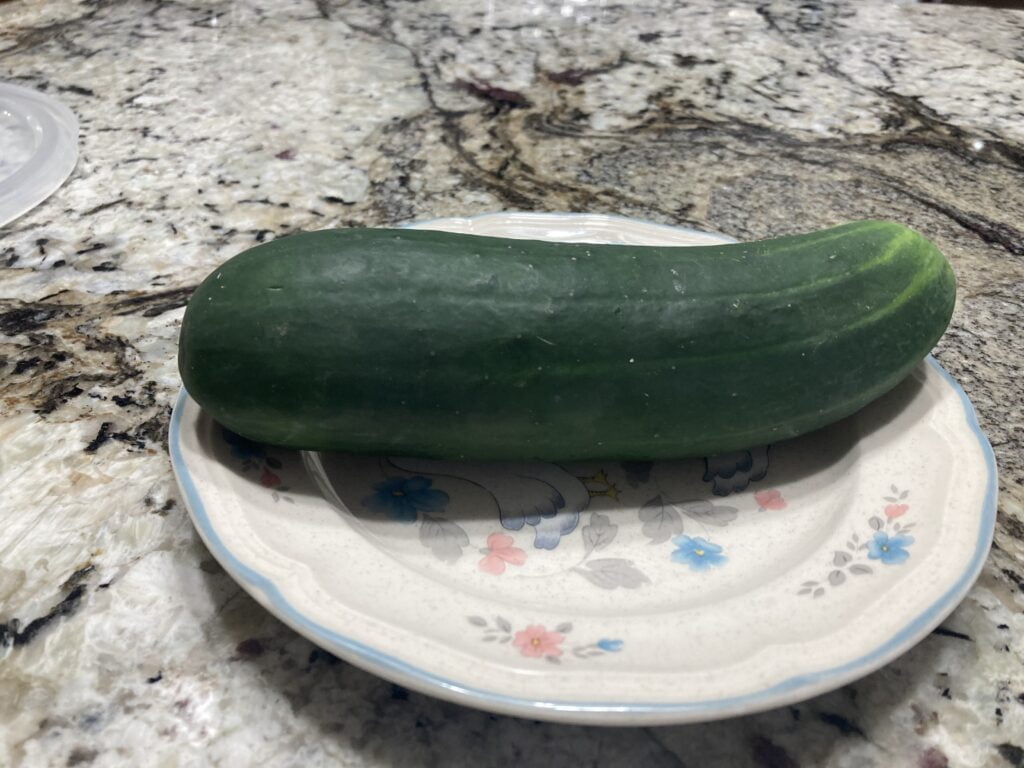
Images by Abavist team

Regular slicing cucumbers
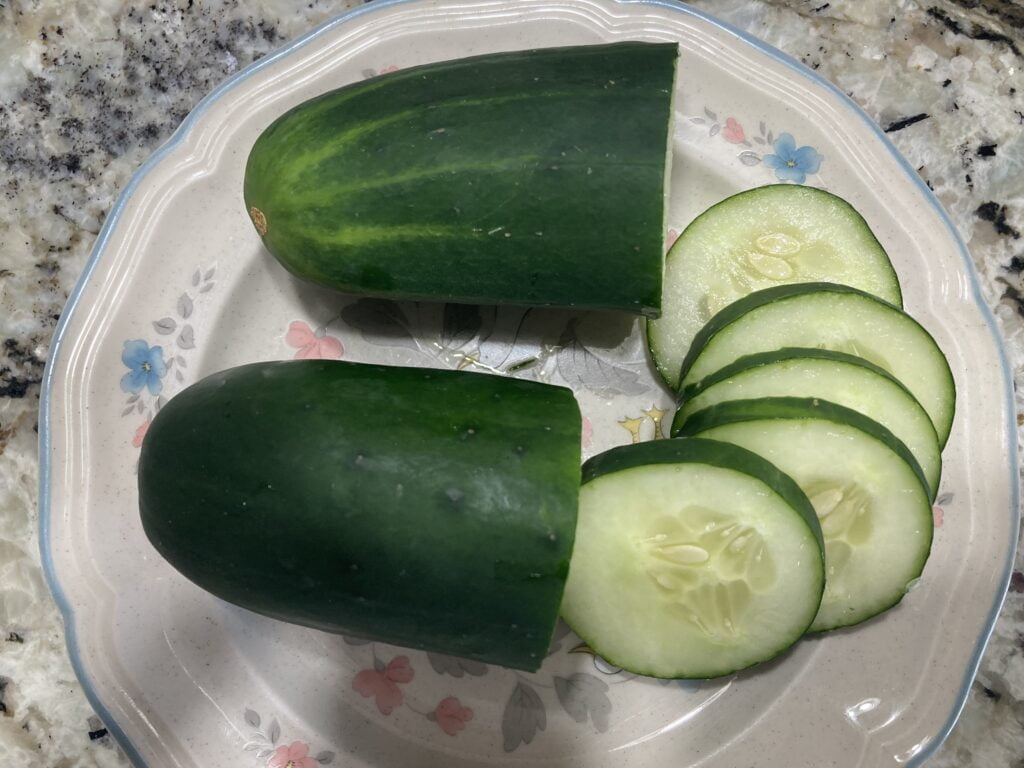
Types of slicing cucumber
list of some popular varieties of slicing cucumbers:
- American Slicing Cucumber – This is the common cucumber variety found in most grocery stores. It’s typically around 7-9 inches in length, with a dark green skin and relatively mild flavor.
- English Cucumber – Also known as hothouse or seedless cucumber, this variety is longer and more slender than the American cucumber. It’s often wrapped in plastic at the store to protect its thinner skin. English cucumbers are seedless or have smaller, less developed seeds.

English Cucumber.
Some Recipes for English cucumber
1.Pan fried english cucumber
2.English Cucumber salad
3.Easy Cucumber Galette
- Mediterranean Cucumber – These cucumbers are often shorter and stubbier compared to other slicing varieties. They have a slightly bumpy skin and are known for their sweet, crisp texture.
- Persian Cucumber – These are small, thin-skinned cucumbers that are usually about 5-6 inches long. They have a slightly sweeter and milder flavor compared to other varieties.

Persian cucumber
- Japanese Cucumber – Also known as Kyuri, these cucumbers are slender and can grow up to 18 inches long. They have a thin skin and are often used in salads and sushi.
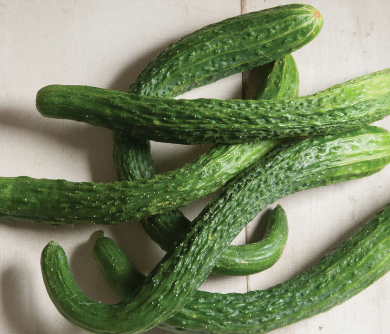

Japanese Cucumbers
- Lemon Cucumber – These cucumbers are small, round, and yellow, resembling lemons in shape and color. They have a mild, slightly sweet flavor and are often eaten fresh.
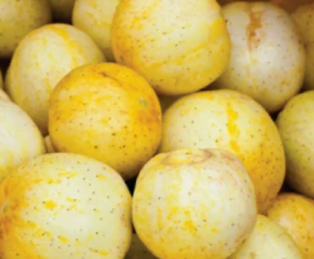
Lemon Cucumber
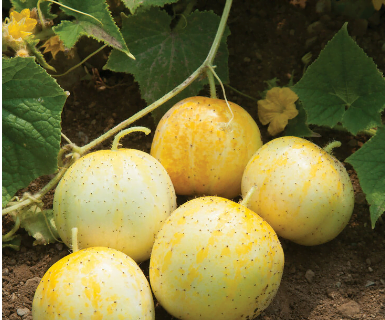
Lemon Cucumber on vine
- Armenian Cucumber – Also known as snake melon or serpent cucumber, this variety is long and slender with a thin, light green skin. It has a mild, slightly nutty flavor.
12 Health Benefits Of Cucumber
Cucumbers are a nutritious and hydrating vegetable that offer various health benefits. Here are some of the key advantages of including cucumbers in your diet
- Hydration: Cucumbers are over 95% water, making them an excellent choice for staying hydrated. Proper hydration is essential for various bodily functions, including digestion, temperature regulation, and circulation.
- Rich in Nutrients: While low in calories, cucumbers are a good source of vitamins and minerals. They contain vitamin K, vitamin C, potassium, magnesium, and manganese.
- Digestive Health: Cucumbers are high in water and fiber, which can help prevent constipation and promote regular bowel movements. The fiber also supports a healthy digestive system.
- Antioxidant Properties: Cucumbers contain various antioxidants, including beta-carotene, vitamin C, and manganese. These antioxidants help combat oxidative stress and may reduce the risk of chronic diseases.
- Heart Health: The potassium content in cucumbers can help regulate blood pressure levels, potentially reducing the risk of heart disease.
- Weight Management: Due to their low calorie content and high water and fiber content, cucumbers can be a satisfying snack option for those looking to manage their weight.
- Bone Health: Vitamin K is important for bone health as it helps in the absorption of calcium. Cucumbers are a decent source of vitamin K.
- Skin Health: Cucumbers can be used topically to soothe and hydrate the skin. Additionally, the high water content can contribute to skin hydration when consumed.
- Anti-Inflammatory Properties: Cucumbers contain flavonoids and tannins, which have anti-inflammatory effects. This can help reduce inflammation in the body.
- Detoxification: The high water content and presence of certain compounds in cucumbers may help flush out toxins from the body.
- Cognitive Health: Some research suggests that cucumbers, due to their fisetin content, may have potential benefits for brain health and may help protect against cognitive decline.
- Stress Reduction: The B vitamins in cucumbers, particularly B vitamins like B1, B5, and B7, can help ease feelings of anxiety and stress.
Consideration for regular slicing cucumber
When considering regular slicing cucumbers for consumption, there are several important factors to keep in mind:
- Freshness: Look for cucumbers that are firm, free from soft spots, wrinkles, or blemishes. They should feel solid and heavy for their size, indicating that they are well-hydrated and fresh.
- Color: The skin of a ripe slicing cucumber should be a vibrant, dark green color. Some varieties may have a slightly lighter or mottled appearance, but avoid cucumbers with yellowing or dull skin.
- Size and Shape: Regular slicing cucumbers are typically longer and cylindrical in shape. The size can vary, but they are generally larger than pickling cucumbers.
- Texture: The skin of a good slicing cucumber should be smooth and relatively thin, making it suitable for eating without peeling. It should not feel waxy or excessively tough.
- Seeds: While regular slicing cucumbers do have seeds, they are smaller and less developed than those in pickling cucumbers. For those who prefer fewer seeds, English cucumbers or seedless varieties are good options.
- Taste: Slicing cucumbers should have a mild, refreshing flavor with a slight crunch. They shouldn’t taste bitter or overly watery.
- Usage: Slicing cucumbers are best suited for fresh consumption in salads, sandwiches, or as a crunchy snack. They are not typically used for pickling, as they have a thinner skin and larger seeds.
- Storage: Store slicing cucumbers in the refrigerator. They should be kept in a plastic bag to retain moisture, and ideally consumed within a week for optimal freshness.
- Organic or Conventional: You may also consider whether you prefer to buy organic or conventionally grown cucumbers. Organic cucumbers are grown without synthetic pesticides or fertilizers, but they may be more expensive.
- Variety: As mentioned in the previous response, there are different varieties of slicing cucumbers, each with its own characteristics. Consider which variety best suits your culinary preferences.
Remember, personal taste plays a significant role, so feel free to experiment with different varieties to find the one you enjoy the most.
Differences between pickling Cucumber and regular slicing Cucumber
Regular cucumbers are typically larger in size, ranging from 6 to 9 inches in length and about 2 inches in diameter.
Regular Cucumber: They have a smoother skin with fewer bumps or spines.
Regular Cucumber :Common varieties have dark green skins, but there are also yellow and white varieties.
Regular cucumbers tend to have larger seeds, which can be more prominent.
Regular Cucumber: They have a milder, sweeter flavor.
Regular cucumbers tend to have a higher water content, which can make them less suitable for pickling.
Regular Cucumber: They are commonly used in salads, sandwiches, and as a raw snack.
Regular Cucumber: These are often vining plants that require more space to grow. They can also be bush varieties that are more compact.
Regular Cucumber: They tend to produce larger quantities of cucumbers per plant.
Regular Cucumber: They are typically harvested when they reach full size and are still tender.
Regular cucumbers are typically larger in size, ranging from 6 to 9 inches in length and about 2 inches in diameter.
Pickling cucumbers often have a slightly bumpy or warty skin.
Pickling Cucumber: They are usually a lighter shade of green, often with some variation in color.
Pickling cucumbers have smaller, less developed seeds.
Pickling cucumbers are more firm and crisp, with a slightly more intense cucumber flavor, which is desirable for pickling.
Pickling cucumbers have a lower water content, which is desirable for preserving their crunchiness during pickling.
Pickling Cucumber: These cucumbers are specifically grown for pickling purposes, such as making dill pickles, bread and butter pickles, and other preserved cucumber products.
Pickling cucumber plants are usually more compact and bushy, making them suitable for smaller gardens or container growing.
Pickling cucumber plants may produce a higher yield of cucumbers in a smaller space, as they are bred for this purpose.
Resources
https://extension.msstate.edu/content/how-do-pickling-and-slicing-cucumbers-differ#:~:text=Pickling
https://www.thedeliciouscrescent.com/pickled-cucumber-salad
